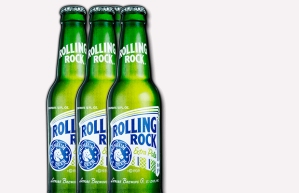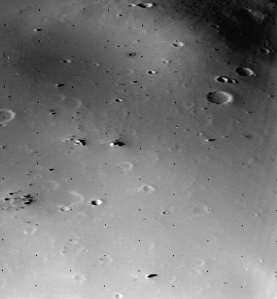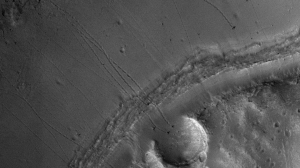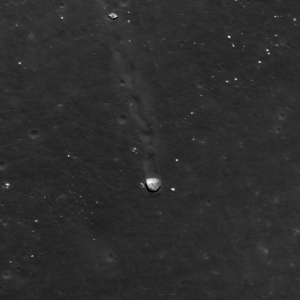MERLIN,PANDORA and PADME as a ARM precursor mission to Deimos and Phobos
suggestions to the 30 June SBAG meeting and to the FAST committee,
Boulders that show image evidence of having rolled downhill might inform us of having lost any connection or cohesiveness to the surface. I wrote that a Boulder could be frozen,sticky(stuck) or cohesion with the surface.The speaker and moderator used the term( fill this in) and the term(fill this in) to describe a boulder made of rubble that might not survive a retrieval attempt or the trip to Distant Lunar orbit.I wrote to the SBAG moderator who asked the question to the speaker my thoughts that a boulder that has rolled downhill in a gravity well has proven it self worthy of retrieval, the moderator suggested that in a micro gravity environment this might be less so. A rolling rock might make for a primary target for a retrieval mission.A boulder that has rolled downhill might have better cohesive structure to be manipulated during retrieval!
The speaker seemed to me when he answered my question not to have considered this idea in his teams work or in his presentation.I have pondered this and I am thinking that the speakers team is only thinking of small asteroids! Deimos and Phobos might be in deep enough gravity fields that you might find rolling rocks?
So that’s it, our hypothesis is that rolling rocks are the best candidates for retrieval based on a greater suitability to remove from the surface and importantly less propellant to loft the retrieved sample from the surface.We would like to submit this as a bases for being accepted onto the FAST volunteer commitee
Rolling Rock beer could donate money to science by flying their logo on the launch vehicle?The Band The Rolling Stones could involve along with beer in public out reach.MERLIN,PANDORA and PADME could be precursor missions for a Deimos and Phobos ARM boulder retrieval mission.In most scenarios the missions would overlap so the precursor mission could image and provide navigation to the ARM. Cubesats such as NEO Scout could also provide support in a joint missions.
We propose new policy here that mimics the ARM funding mechanism.The Human space directorate needs to know Human SKG such as the radiation levels solar and cosmic at proposed human landing site on both martian moons therefore Merlin and the other Discovery AO could be funded from the human spaceflight directorate as well as the science mission directorate. We could fly two Mars moons missions with joint funding, Merlin is the lander so it could fly the radiation experiment(RAD) to the proposed human crewed martian moon crater
http://msl-scicorner.jpl.nasa.gov/Instruments/RAD/
This Discovery AO will have runners up and a final winner , if none be mars missions then My idea that several mars moon missions be flown that also carry RAD
EDIT
This is a study of ARM close proximity operations, we think this would be enenced by close proimty operations with a nearby operational Pandora mission.
ARM close proximity operations
We think ARM should be discussed at the mid decade Decadal survey to discuss the idea that ARM should really retrieve a boulder from Phobos or Deimos
EDIT 27 December 2015 , a ARRM derived Phobos sample return,
ARRM derived Phobos sample return
Steven Rappolee: Do any of these moons have any imaged boulders that have moved or rolled downhill?
————- (06/30/2015 13:47) ————-
Steven Rappolee: Merlin as ARM precursor mission
————- (06/30/2015 13:50) ————-
Steven Rappolee: landing in a crater would provide important radiation data for human missions





I like your idea. I used to be completely opposed to ARM until I realized the implications of the calculation here:
The Coming SSTO’s: Applications to interplanetary flight.
http://exoscientist.blogspot.com/2012/08/the-coming-sstos-applications-to.html
The calculation showed that if you have propellant depots at both departure and arrival points, then a *single* Falcon 9 stage could do ALL the propulsion for a manned Mars mission: from LEO departure, to Mars orbit insertion, to Mars landing, to Mars liftoff, to departure towards Earth. And the same is true for any mid-sized launcher, the Atlas V, the Delta IV, the Soyuz, the Ariane 5 core, etc. No mega-sized and mega-expensive launchers required. In fact, you can cut the mass that need to be lofted to LEO by *two orders of magnitude*.
Now for where you get the large mass needed for the orbital propellant depots, if there are large H2O deposits on the Moon you could get it there. But an advantage of getting it from asteroids or comets is the lower gravity they have and it would be easier to send it into space from their surfaces.
Since Phobos and Deimos also have low gravity, for the return missions, it would be useful to get the propellant from there.
Bob Clark
LikeLiked by 1 person
Thanks for your kind words!
SEP(ARM) could transport fuel depots/tankers with great economy.Ditto prepositioning large Habs.Fuel depots would be used for human crews round trips.
Sending Discovery AO and ARM to Deimos might mean a possibility of finding a Boulder FROM Mars from impact ejecta. This would be a “free” uncontrolled Mars sample return!
LikeLike